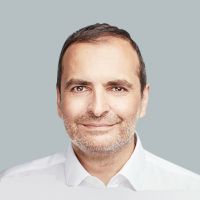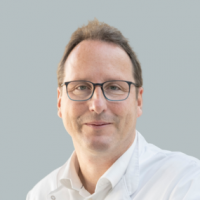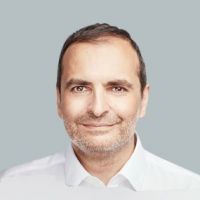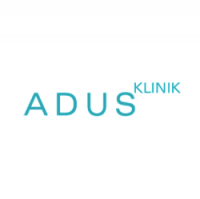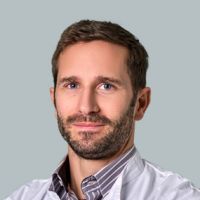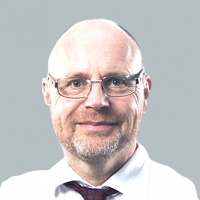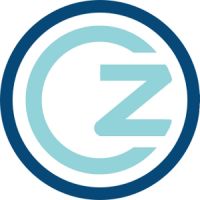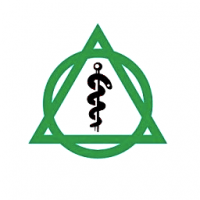Correct posture is understood as shoulders pulled back and an erect back. In Scheuermann's disease, however, there is a pronounced hunchback. It is caused by an altered shape of the vertebral bodies and a spinal column that is curved backwards.
Other names for Scheuermann's disease are
- Adolescent kyphosis,
- Morbus Scheuermann
- Juvenile kyphosis and
- Juvenile osteochondrosis.
Colloquially, it is also known as a hump or hunchback.
With an incidence of about 20 per cent, Scheuermann's disease is one of the most common diseases in adolescence. In the population as a whole, about 4 to 6 percent of people are affected. The male sex is affected at least twice as often as the female.
The human spinal column has a double curvature in a normal, healthy state:
- The thoracic spine is curved towards the back by 20 to 40 degrees (known medically as kyphosis),
- the lumbar spine is slightly curved forward (lordosis).
If the angle of curvature of the kyphosis is over 40 degrees, it is known as Scheuermann's disease. Severe kyphosis exists when the angle of curvature exceeds 70 degrees.
From about age of 11, the disease can be detected by clinical abnormalities and radiologically visible changes before the age of 18. By the end of pubertal body growth, the pathological changes in the vertebral bodies have stabilised, but the physical changes remain.
In most young people, the disease is diagnosed between the ages of 11 and 17.
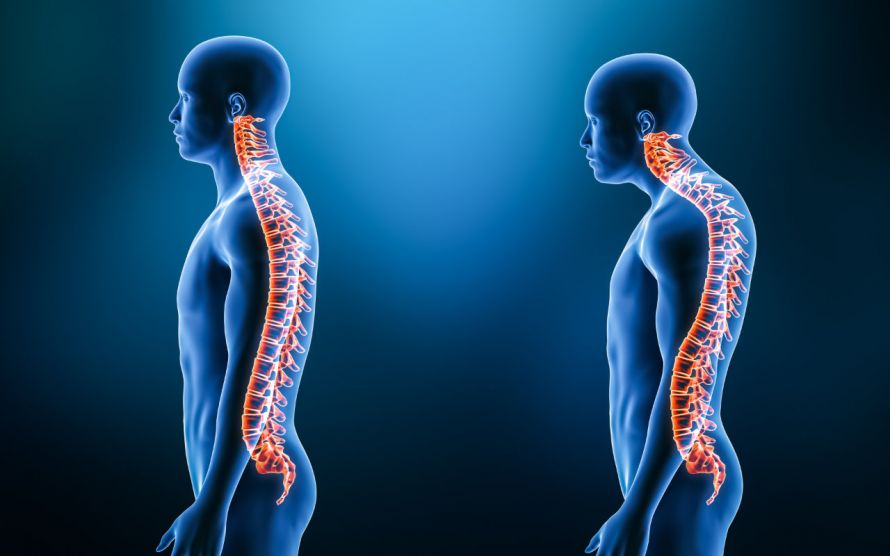
On the left a normally curved spine, on the right a spine with Scheuermann's disease © Matthieu | AdobeStock
Normally, the vertebral bodies are shaped like cylinders. In Scheuermann's disease, however, a growth disorder causes the vertebrae to grow more slowly on the front side than on the back. This is how the vertebrae develop into a wedge shape (wedge vertebrae).
In most cases, the vertebrae of the middle and lower thoracic spine are affected. More rarely, the disorder also affects the lumbar vertebrae or the vertebrae in the transition area between the thoracic and lumbar spine.
The so-called Schmorl cartilage nodules are also typical of Scheuermann's disease. This is disc tissue that has broken into the bone substance at the base and top plates of the vertebrae.
Researchers suspect a genetic predisposition for the growth disorder of the vertebrae. However, the exact pathogenesis of the disease is still the subject of scientific research.
A frequently discussed theory is that the disorder originates from mineralisation and ossification processes during the pubertal growth phase. Diseases such as infantile osteoporosis or an excess of growth hormones are therefore also suspected of playing a role in development.
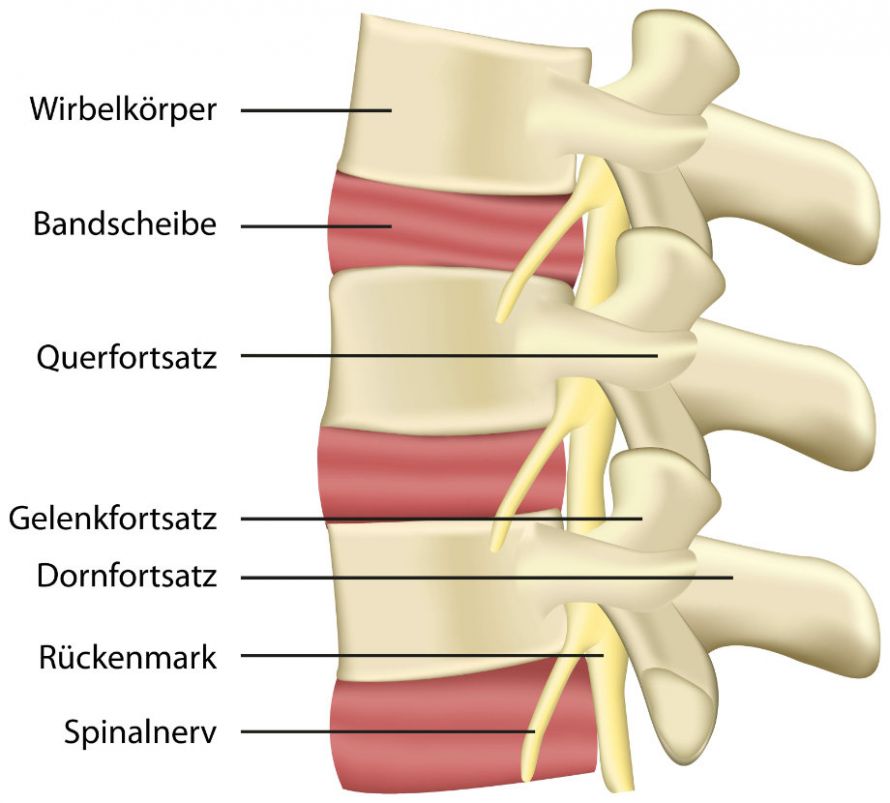
Anatomy of the spine with normally grown vertebrae © bilderzwerg | AdobeStock
In addition, there are external influences that could favour the development of Scheuermann's disease. These include
- competitive sport that puts a strain on the back,
- sports that require a hunched back (e.g. rowing or weightlifting),
- a general stooped posture.
At first, Scheuermann's disease often does not cause any problems or pain. If the thoracic spine is affected, there is a clearly visible curvature.
In the thoracic spine, the disease manifests itself as a hump. In the area of the lumbar spine, however, the back is straight, not curved forward as usual (flat back).
Back pain often only occurs later during the course of the disease. It may worsen during physical activity and improve at rest. The pain usually improves after the body has finished growing.
The clinical symptoms in the further progression of the disease and in adults essentially depend on the degree of curvature. Thus, under certain circumstances, it can lead to
- Movement restrictions,
- Ossification of the affected spinal segments,
- Increased lordosis (forward curvature) of the adjacent sections,
- In rare cases, neurological deficits due to spinal cord compression (pressure on the spinal cord),
- Extreme kyphosis (angle of curvature greater than 100 degrees) also leads to disturbances of the heart and lung function
may occur.
In addition, the hump can worsen over time. This appearance is called post-Scheuermann syndrome. The back muscles are under extreme strain in Scheuermann's disease and are thus constantly overloaded. This can cause pain.
People with hunched backs have an increased risk of chronic back pain compared to the general population.
The following symptoms and long-term complications can therefore occur with Scheuermann's disease:
- Hump or flat back (sometimes painless in the early stages)
- Chronic back pain
- Movement restrictions,
- Neurological deficits owing to spinal cord compression
- Increase of the hump (post-Scheuermann syndrome)
Most of the time, young patients see a doctor because of the developing hump and/or because of back pain.
The doctor asks the patient about
- the nature of the pain,
- functional limitations,
- neurological symptoms and
- other symptoms
The specialist then assesses the following during a physical examination
- the shape of the spine,
- the severity of the deformity,
- the triggering of pain,
- neurological and other physical abnormalities.
An X-ray of the thoracic and lumbar spine provides final certainty as to whether there is excessive kyphosis. X-rays can also be used to identify the typical wedge-shaped vertebral bodies and Schmorl's cartilage nodules.
Only in very rare cases is a magnetic resonance imaging (MRI) or a computer tomography (CT) necessary. Specific laboratory tests or histological examinations are not usually necessary to make a diagnosis.
During the growth phase, young people should have their spinal deformity checked at regular intervals. This helps to determine whether the spinal deformity is getting worse.
Once growth is complete, no further check-ups are necessary, provided there are no complaints.
Whether treatment is necessary depends largely on whether
- there is persistent pain,
- the extent of the curvature increases and
- neurological deficits exist.
The aim of the treatment is to
- avoid a fixed hump with restricted movement,
- prevent the development of a severe spinal deformity,
- reduce or eliminate the pain and
- correct the spinal deformity.
Basically, there are several therapeutic options. They are used individually or in combination depending on the symptoms and the angle of curvature:
- Lifestyle changes,
- Muscle building and physiotherapy,
- Drug treatment,
- Wearing an corset or orthosis to correct posture and
- surgery.
Conservative measures
In the area of lifestyle changes, for example, sleeping in the prone position on a harder mattress is recommended. Also, no sports should be practised where the spine is compressed (as in jumping sports) or where a hunched back is necessary. In addition, sufferers should not sit for long periods in a bent posture and should not expose the spine to incorrect loading.
Physiotherapy plays a central role in the treatment. The therapist can improve the posture decisively with special exercises to strengthen the muscles. The aim is to straighten the bent back. In a mild form of the disease, physiotherapy alone may be enough to achieve success.
Exercises alone do not always bring the desired success. Then the patient can also wear a corset or an orthosis. With these aids the spine is straightened.
Especially during the growth phase, wearing a corset is a proven remedy. However, corset treatment can only be successful if the patient wears the corset all day if possible. This requires a lot of self-discipline.
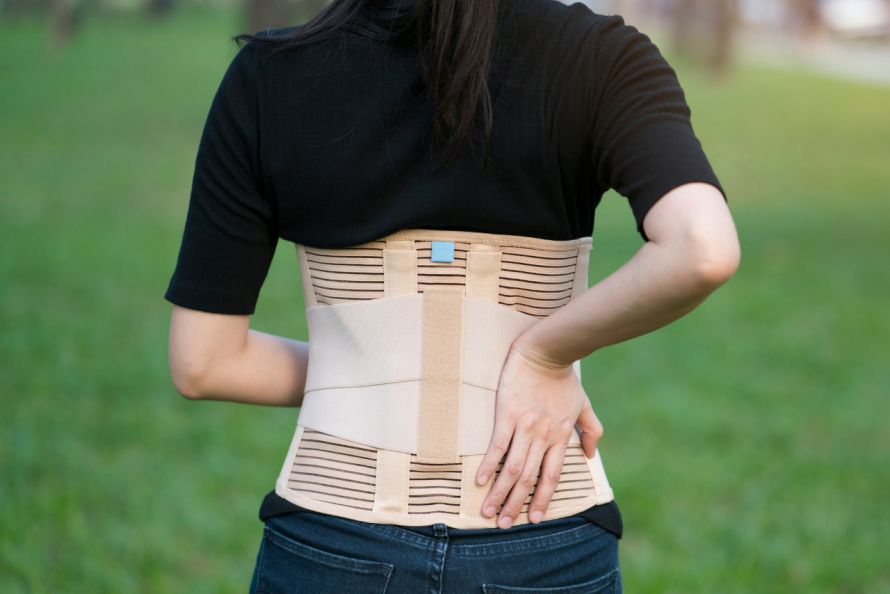
The spine can be permanently supported and straightened with a corset © tatomm | AdobeStock
Drug treatment consists of the administration of painkillers and muscle relaxants.
Surgical treatment for Scheuermann's disease
Surgery is associated with considerable risks in Scheuermann's disease. Possible complications of the surgery are
- a stiffening of the affected section of the spine,
- nerve injuries or even
- a paraplegic injury.
- Therefore, the indication for surgery should only be given after careful consideration of the advantages and disadvantages. Indications are extremely exceptional cases, namely
- a curvature angle greater than 75 degrees with a deformity that is no longer tolerated by the patient or is accompanied by pain,
- in the case of neurological deficits/spinal cord compression or
- for pain that cannot be treated in any other way.
In the course of the surgery
- the surgeon replaces the intervertebral discs with bone segments,
- removes parts of the vertebral bodies and
- uses metallic implants.
In principle, the prognosis for Scheuermann's disease is very good, as the disease does not necessarily cause pain. The progression of the disease can also be positively influenced by means of physiotherapy or a corset.
However, depending on the extent of the spinal deformity, complications can also occur later in adulthood. Complaints such as pain or restricted movement are to be expected if, in addition to kyphosis, a scoliosis exists or if there is an extremely flat back.



